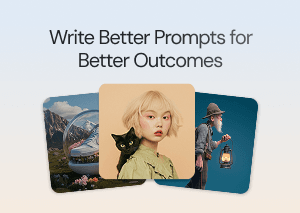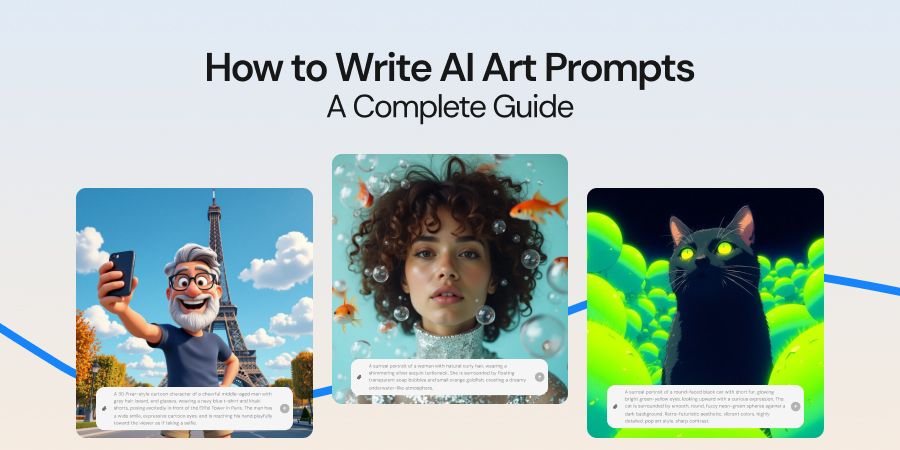
How to Write AI Art Prompts: A Complete Guide
AI art has moved from a niche experiment to a mainstream creative tool.
Marketers use it to design campaign visuals, designers explore it for rapid prototyping, and everyday creators turn simple words into striking images.
The results can feel magical, but they are never random. The difference between an average output and a professional-looking image lies in how the prompt is written.
Learning how to write prompts for AI art is now an essential creative skill. A prompt is more than a command. It is a description that tells the AI generator what to produce, how it should look, and what style it should follow.
The more specific and structured the text, the closer the output matches your vision. People searching for AI art prompt tips or guides on how to write a good prompt for AI art are really looking for ways to take control of this process.
This guide covers everything from the basics of how to write an AI art prompt to advance techniques that improve consistency.
What Are AI Art Prompts?
An AI art prompt is the instruction you provide to an image generator. It acts as a blueprint, shaping what the system creates.
A strong prompt might include the subject, colors, textures, artistic style, and even details about lighting or camera angle. Weak prompts, on the other hand, leave too much open, producing generic results.
When people ask how to make good AI art prompts, the answer always comes back to clarity and detail.
The more precise your keywords for the AI art generator, the better the chances of getting an image that feels polished and usable. In many ways, learning how to write AI prompts for art is like learning a new creative language.
How Do AI Art Generators Work?
AI art generators are trained on massive collections of images and text. They don’t think like people or understand concepts in a human sense. What they do is recognize patterns in their training data and connect words with visual features.
When you type an AI art prompt, the system translates those words into patterns, shapes, and styles that resemble your description.
The Role of Keywords in AI Image Prompts
The quality of results depends on the words you choose. Strong prompts rely on precise AI art generator keywords that tell the system exactly what to create. General terms such as “beautiful” or “cool” rarely help, because the model cannot interpret them consistently. Specific descriptions always perform better.
For example, asking for “a beautiful face” will confuse the system. A stronger request might be:
-
A portrait of a woman with green eyes, symmetrical features, and soft lighting
-
An illustration of a man with sharp jawline, short brown hair, and watercolor style
These keywords act like a map for the generator, leading to sharper and more realistic outputs.
What Makes a Prompt Effective?
When people search how to make good AI art prompts, the advice always points to detail and structure. Good prompts often include:
-
Content type: photo, 3D rendering, sketch, painting
-
Subject: person, animal, object, abstract concept
-
Details: color, size, texture, environment
-
Style: realism, surrealism, cubism, impressionism
-
Composition: lighting, angle, resolution, aspect ratio
This structure turns a vague request into a clear set of instructions. It’s the same principle behind strong writing in other contexts, such as crafting a clear thesis in how to write a cultural analysis essay or organizing sections in how to write an introductory paragraph. Structure guides output, whether in text or images.
Providing context is very important as it anchors your prompt. If you ask for a “bear,” the system may generate anything from a cartoon to a photorealistic animal. A well-written prompt like “a photorealistic grizzly bear standing in a snowy forest at sunset” gives the generator enough direction to produce a usable result.
Context is what transforms AI image prompts from rough ideas into polished visuals. Adding adjectives, locations, and stylistic cues ensures the AI knows what you want.
The AI Art Prompt Formula
Learning how to write AI art prompts becomes easier when you follow a simple formula.Moving ahead of writing long, confusing sentences, the idea is to break the prompt into clear parts.
Each part adds precision, and together they form a structure that most AI image generators respond to consistently.
Basic Framework for Prompts
A strong prompt usually follows this structure:
-
Content Type: Is it a photograph, 3D render, painting, or sketch?
-
Subject: Who or what should be in the image?
-
Details: Colors, sizes, textures, clothing, environment, or atmosphere.
-
Style: Realism, surrealism, impressionism, cubism, anime, pop art, or minimalist.
-
Composition: Resolution, camera angle, aspect ratio, lighting type.
-
Extras: Mood, era, or references to specific artists or movements.
This framework works across tools like Midjourney, DALL·E, Stable Diffusion, Leonardo, Bing Image Creator, and ImagineArt. The more of these elements you include, the closer the generator comes to your vision.
Example of a Weak Prompt vs a Strong Prompt
-
Weak: A cat
-
Strong: A realistic photograph of a black cat with glossy fur, sitting upright on a bright red velvet chair, illuminated by soft morning light coming through a nearby window, shadows gently cast across the floor, 4K resolution, DSLR depth of field.
The second example uses keywords for AI art generators that define subject, color, lighting, and quality. The difference in clarity often decides how professional the output feels.
Prompt Length and Detail
Many people ask how long an AI art prompt should be. A short phrase like “blue bird” may work, but the output is unpredictable.
A detailed line with 15–20 words often performs better because it leaves less room for interpretation. Adding context helps, the same way a well-written introduction strengthens essays such as how to write a news release or how to write an effective speech.
Formula in Action
Here are some quick examples that follow the framework:
-
A 3D rendering of a futuristic city skyline at night with glowing neon lights, cyberpunk style, aerial view, cinematic atmosphere.
-
A watercolor painting of a vast sunflower field during sunset, warm golden tones, impressionist style, wide-angle view, serene countryside mood.
-
A minimalist sketch of a distant mountain range in black and white, thin bold outlines, aerial composition, tranquil mood, timeless simplicity.
Each line gives the AI generator enough instruction to deliver predictable, high-quality results.
How to Write Better Prompts
Knowing the formula is one thing, but applying it step by step makes the process repeatable. People searching for how to write a prompt for AI art or looking for AI art prompt tips want practical guidance.
The following steps outline exactly how to shape ideas into usable prompts.
Step 1: Define the Content Type
Start by clarifying the kind of output you want. This helps the generator set a visual direction.
-
A photograph of…
-
A 3D rendering of…
-
An oil painting of…
-
A sketch of…
Step 2: Describe the Subject
Every prompt needs a subject. Without it, the system has nothing to focus on. Subjects can be people, animals, objects, or abstract ideas.
-
An illustration of a golden retriever…
-
A photograph of a violin on a wooden table…
-
A sketch of a futuristic spaceship…
Step 3: Add Descriptive Details
Details refine the image and prevent generic results. These can include:
-
Colors: red, blue, pastel, monochrome
-
Textures: smooth, rough, metallic, glossy
-
Surroundings: forest, city skyline, desert, ocean
-
Clothing or accessories if the subject is human
Example: A 3D rendering of a chair that is bright yellow, round, with a glossy surface
Step 4: Choose Style and Artistic Form
Style directs the creative tone of the output. Popular choices include:
-
Realism
-
Minimalism
-
Surrealism
-
Impressionism
-
Pop art
-
Cyberpunk
Example: An owl illustration in surrealist style, with exaggerated features and vibrant tones
Step 5: Define Composition
Composition controls how the image feels visually. Adding these terms makes prompts sharper:
-
Lighting: volumetric, soft, cinematic, natural
-
Viewpoint: aerial, close-up, wide shot
-
Resolution: 4K, ultra-high detail
-
Aspect ratio: 16:9, square, vertical
Example: A realistic photograph of a mountain lake at sunrise, soft natural lighting, wide shot, 4K resolution
Each step adds layers of clarity. Writing prompts in this structured way is similar to the discipline of organized writing covered in how to write minutes of a meeting or how to write a case report. In both cases, clarity and order turn raw information into something useful.
Advanced Prompt Engineering Techniques
Once you master the basics of how to write AI art prompts, the next step is refinement. Advanced techniques allow you to control outputs with more precision and reduce randomness.
Many people searching for AI art generator prompt tips or how to make good AI art prompts want these methods because they turn average results into professional-quality visuals.
Negative Prompts: Excluding What You Don’t Want
A common frustration in AI art is unwanted details. Negative prompts fix this issue by telling the system what to avoid. This is especially important in tools like Stable Diffusion or ImagineArt.
Examples:
-
Exclude: blurry, distorted, cropped
-
Exclude: extra hands, text overlay, watermark
-
Exclude: low resolution, incorrect anatomy
Adding negatives ensures images are clean and polished. This principle is not far from editing out irrelevant details in writing, such as in how to write a quick one-page literature review, where focus improves clarity.
Keyword Weighting and Priority
AI image generators often give more importance to words at the start of a prompt. In Midjourney and Stable Diffusion, you can even assign weight to terms. This helps emphasize the most important features.
Examples:
-
Portrait of a woman::2 wearing a red dress::1 in cinematic lighting
-
Landscape::3 mountain range::2 river::1 impressionist style
Prioritizing key terms reduces unwanted emphasis on background or secondary features.
Multi-Prompting and Layering
Complex images often require more than one subject or style. Multi-prompting lets you layer elements in a single instruction.
Examples:
-
A city skyline at night:: a dragon flying overhead:: cyberpunk style
-
A renaissance painting of a scholar:: futuristic neon glow
This method is especially useful for concept design or experimental projects. It’s similar to layering arguments in structured writing, as seen in how to prompt ChatGPT for a sales script, where multiple inputs shape a stronger output.
Optimizing Prompt Length
Short prompts work but often lack control. Long prompts add detail but can overwhelm the generator. The best range for many tools is 15–30 words, with clear descriptors.
Compare:
-
Short prompt: “blue bird”
-
Optimized prompt: “A hyperrealistic photograph of a blue bird perched on a wooden branch, golden hour lighting, 4K resolution”
Longer, detailed inputs usually give better results, much like a complete introduction strengthens essays or a journalistic article.
Tool-Specific Prompt Tips
Different generators respond to prompts in unique ways:
-
Midjourney: Prefers detailed styles and artist references.
-
DALL·E: Responds best to descriptive adjectives.
-
Stable Diffusion: Allows heavy customization with negative prompts.
-
Bing Image Creator: Works well with short, vibrant descriptors.
-
ImagineArt AI Art Generator: Built for flexibility, balancing realism with creative visuals and supporting multi-model comparisons.
Understanding these preferences saves time and improves consistency.
40+ AI Art Prompt Examples in Different Categories
Reading about structure is useful, but seeing AI art examples with prompts makes the process clear.
Below are prompt ideas for AI art grouped into categories. Each example follows the framework of subject, detail, style, and composition. These can be copied directly or adapted for your own projects.
Portraits and Characters
Prompts for human figures, fantasy characters, and stylized portraits.
-
A hyperrealistic portrait of a woman with green eyes, freckles, and golden hour lighting, 4K resolution
-
An oil painting of a king wearing a crimson robe, baroque style, dramatic lighting
-
A minimalist sketch of a young child laughing, black ink on white paper
-
A futuristic cyborg warrior with glowing eyes, cyberpunk neon style
-
A surrealist portrait of a musician with melting instruments, inspired by Salvador Dalí
Landscapes and Nature
Prompts that capture outdoor environments, scenery, and wildlife.
-
A watercolor painting of a sunflower field at sunrise, impressionist style
-
A realistic photograph of a snowy mountain range under northern lights, wide angle view
-
A 3D render of a coral reef with bright tropical fish and detailed textures
-
A sketch of a dense forest with tall trees, black and white charcoal style
-
An oil painting of a desert landscape with a caravan of camels at dusk
Abstract and Surreal Art
Prompts that explore creativity beyond realism.
-
A cubist painting of a crowded city street, fragmented and colorful
-
An abstract expressionist piece with swirling red and blue brushstrokes
-
A surreal image of a clock melting over a skyscraper in twilight
-
A digital art composition of floating islands with waterfalls in space
-
A vaporwave-style collage of palm trees, neon lights, and retro tech
Fantasy and Science Fiction
Prompts for imaginative, otherworldly creations.
-
A 3D rendering of a dragon flying over a futuristic city skyline at night
-
An illustration of a sorcerer casting spells in a gothic castle hall
-
A sci-fi spaceship hovering above Mars with glowing engines, cinematic lighting
-
A fantasy painting of a castle floating in the clouds, soft pastel tones
-
A dark alien landscape with bioluminescent plants, high detail photorealism
Branding and Marketing Visuals
Prompts tailored for campaigns, covers, and concept designs.
-
A minimalist product mockup of sneakers on a glass pedestal, soft shadows
-
A 3D rendering of a perfume bottle glowing in a neon-lit environment
-
A flat design illustration of a coffee cup logo, brown and cream color scheme
-
A realistic photograph of a smartwatch on a wooden desk, lifestyle marketing style
-
A pop art poster design of a city skyline with bold colors and thick outlines
Social Media and Creative Projects
Prompts designed for quick visuals, stories, and engagement.
-
A digital illustration of a motivational quote on a mountain background, pastel colors
-
A retro-style poster of a beach scene with vibrant typography
-
A cartoon sketch of two friends eating pizza, playful style, square format
-
A 3D icon set of social media logos floating in a white space, minimalist
-
A GIF-style frame of a robot dancing under disco lights, neon palette
Studying examples gives you patterns to follow. You can see how descriptive keywords guide the generator and how style words change the outcome.
Writers do the same in other contexts, such as in how to write a movie novelization or how to write a cover letter with no experience, where examples help turn theory into practice more easily, with less experimentation.
Top AI Art Tool Comparisons: Which Art Generator Should You Use?
Each image generator interprets prompts differently. Learning how to write prompts for AI art also means knowing how tools respond to keywords. Below is a list of platforms that are being used in great numbers.
ImagineArt
ImagineArt AI Art Generator is designed as an all-in-one creative platform. It supports multiple models, making it versatile for both realistic and artistic outputs.
Users can switch between models like GPT-based visual systems, Gemini, and other integrations, giving flexibility to experiment with styles. ImagineArt also powers AI Avatars, a feature for personal branding and social identity.
For creators exploring how to prompt AI art for marketing campaigns, ImagineArt offers consistency and accessibility across devices.
Midjourney
Midjourney is best known for its hyperrealistic and artistic results. Prompts with detailed styles, lighting descriptions, and artist references perform especially well here.
The platform operates mainly through Discord, which also gives users the chance to observe other prompts in real time. This collaborative angle makes Midjourney strong for inspiration but less convenient for casual users.
DALL·E
DALL·E emphasizes imagination and creative interpretation. It works best with descriptive adjectives and clear artistic direction. Prompts that focus on surrealism, dreamlike scenes, or unique combinations of objects usually perform better.
For beginners, the interface feels simple compared to Discord-based tools.
Stable Diffusion
Stable Diffusion is an open-source and highly customizable platform, allowing greater control. Advanced features like negative prompts, keyword weighting, and control over fine details make it powerful for experienced users. Communities have also built extensions and integrations, allowing Stable Diffusion to be used inside design software.
Anyone looking into AI art generator prompt tips for professional customization often turns here.
Leonardo AI
Leonardo is built for creative industries, especially gaming and concept design. It shines when prompts involve character design, fantasy art, or assets for digital worlds. Its strength lies in balancing high detail with artistic flexibility.
Bing Image Creator
Bing Image Creator is free and accessible, which makes it a great entry point. It performs well with short, descriptive prompts and bright, vibrant visuals. However, it struggles with complex details like facial accuracy or consistency across multiple generations.
How to Choose the Right AI Art Generator?
The right generator depends on your goals:
-
ImagineArt for multi-model flexibility, avatars and an all in one creative suite
-
Midjourney for photorealism and artist-driven prompts
-
DALL·E for surreal or playful visuals
-
Stable Diffusion for customization and professional detail
-
Leonardo AI for game and concept design
-
Bing Image Creator for quick, free results
Understanding tool differences saves time and avoids frustration.
The principle mirrors the process of selecting the right model in the best ChatGPT alternatives, where capabilities vary by use case.
Practical Use Cases for AI Art
Learning how to write AI art prompts is not just a technical skill. It opens doors across creative and business fields. From marketing campaigns to personal projects, prompts guide generators to produce images that once required expensive design software.
Below are some of the strongest use cases for AI image prompts today.
Marketing Campaigns and Branding
Businesses use AI art to create campaign visuals, product mockups, and ad designs.
Detailed prompts such as “A 3D render of a perfume bottle glowing under neon light, futuristic background, cinematic style” generate marketing-ready concepts.
These outputs help brands test creative directions before investing in full production.
This approach ties directly to content-led strategies, as covered in How to Use AI Chat for Influencer Campaigns in 2025, where prompts create quick assets for influencer-driven promotions.
Social Media Content Creation
Social platforms demand a constant stream of visuals. Writing strong AI art prompts makes it easier to produce fresh images daily. Prompts tailored for square ratios, bold colors, or minimalist backgrounds work well for posts and stories.
Pairing these visuals with tools like caption generators or prompt-based writing, gives marketers full control over both visuals and text.
Suggested read: How to Transform Feedback Collection
Concept Design and Creative Exploration
Designers use AI to experiment with styles, layouts, and ideas that would take hours to draft manually.
For example, “A futuristic city skyline at dusk, neon reflections, cyberpunk tone, wide angle” can serve as a concept for film, gaming, or publishing projects. Tools like ImagineArt and Stable Diffusion allow layering prompts for even greater flexibility.
Writers can also use AI art prompt ideas to inspire stories or support visual-heavy content.
Personal Projects and Education
Students and hobbyists explore AI art examples with prompts to learn storytelling through images. Prompts for abstract art, landscapes, or portraits provide both practice and enjoyment. Educational uses range from classroom illustrations to visual aids in presentations.
Resources like the best AI tools for students show how combining writing, research, and visual tools creates a full creative workflow.
Customer Support and Communication
Some businesses experiment with AI image prompts to explain processes visually.
For example, an insurance company might prompt an illustration showing “steps of a claim process” in simple, infographic style. This mirrors the shift toward automated communication where clarity and speed matter most.
Conclusion – Why Do Contextual Platforms Matter?
A well-written, contextual AI art prompt is more than a line of text. It functions as a blueprint that shapes the outcome of the generator. Learning how to write a prompt for AI art teaches you to blend subject, detail, and style in a way that consistently delivers quality visuals.
Clarity, Structure, and Creativity
-
Clarity: precise descriptors remove guesswork.
-
Structure: content type, subject, detail, style, and composition guide the generator step by step.
-
Creativity: stylistic choices, negative prompts, and keyword variations bring originality.
These same principles apply in writing and communication. Our writing guides also highlight how structured language improves output, whether in text or images.
Practical Applications of AI Image Prompts
Prompts now drive real-world results across industries:
-
Marketing campaigns use them for product mockups and advertising visuals.
-
Social media strategies rely on them for fast, eye-catching graphics.
-
Design and concept art projects use prompts to explore ideas before full production.
-
Personal and educational uses range from illustrations for schoolwork to creative experimentation.
If you know how to write AI prompts, your art generation turns everyday imagination into usable content.
The future of visual creativity is text-driven. Mastering tips for AI art prompts and experimenting with AI art generator keywords empowers you to move from trial and error to professional control. The process is simple to begin, yet deep enough to keep evolving.
Frequently Asked Questions
Here are the top questions we received regarding AI art generation and how one can do it better.
More topics you may like
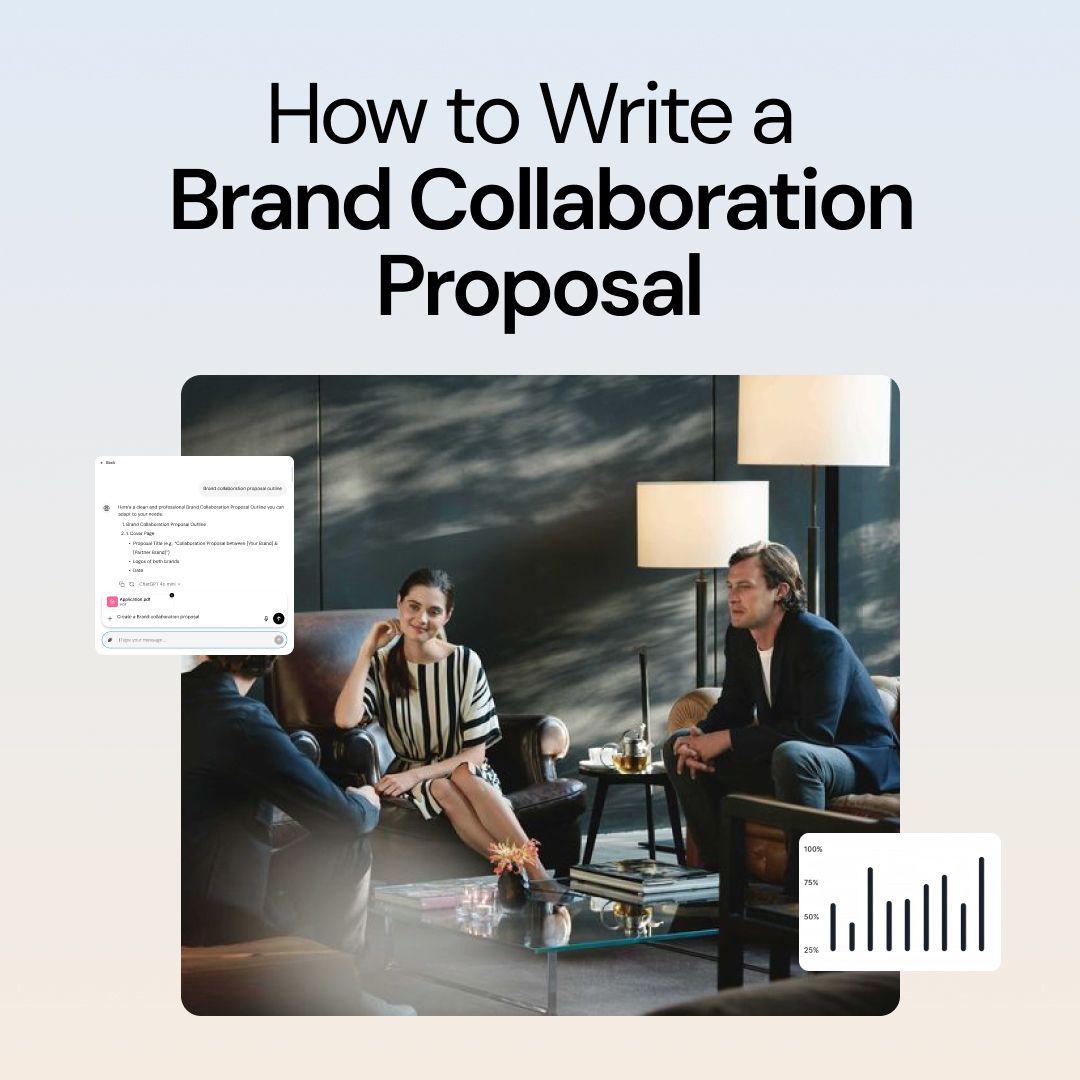
How to Write a Brand Collaboration Proposal in 2025

Muhammad Bin Habib
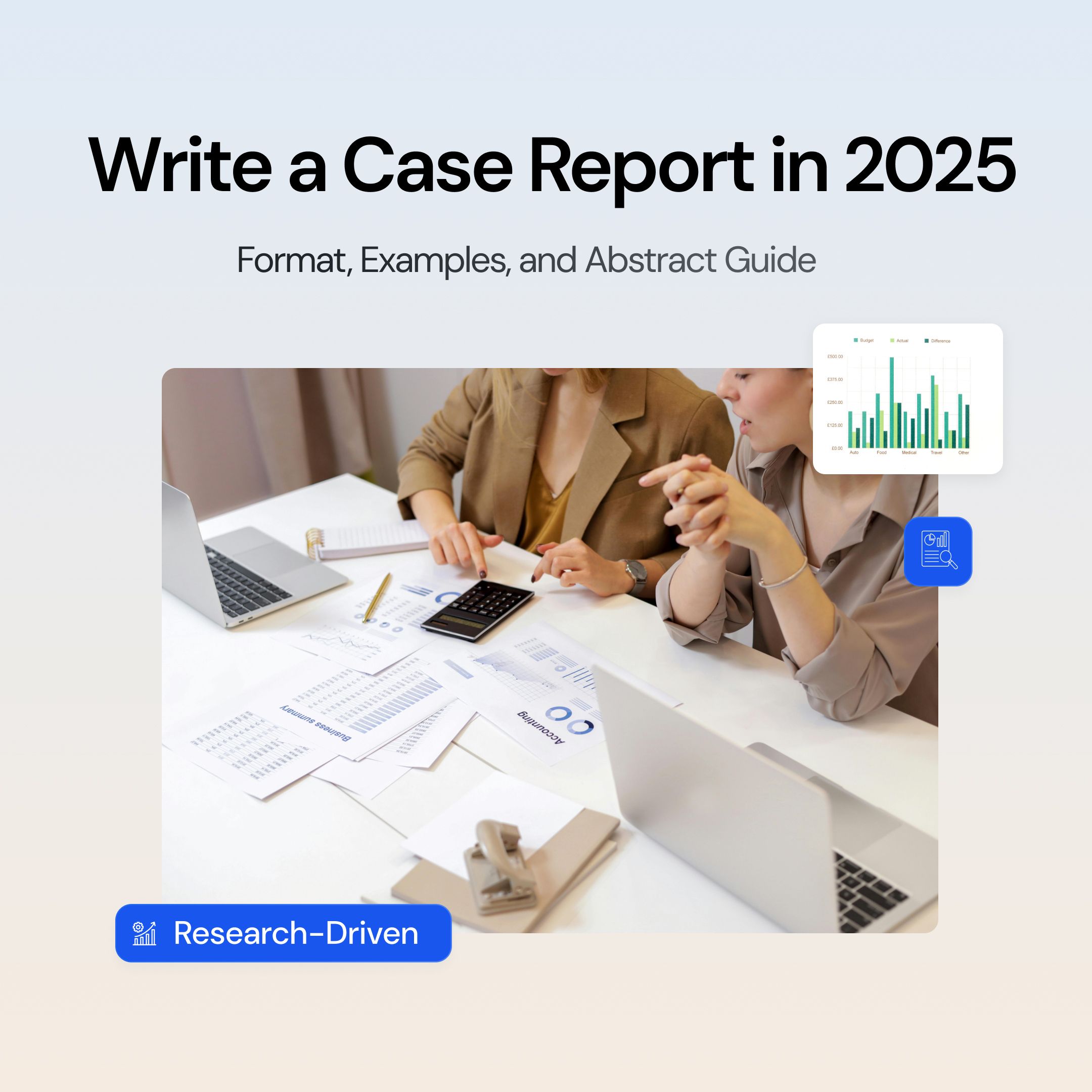
How to Write a Case Report in 2025

Muhammad Bin Habib
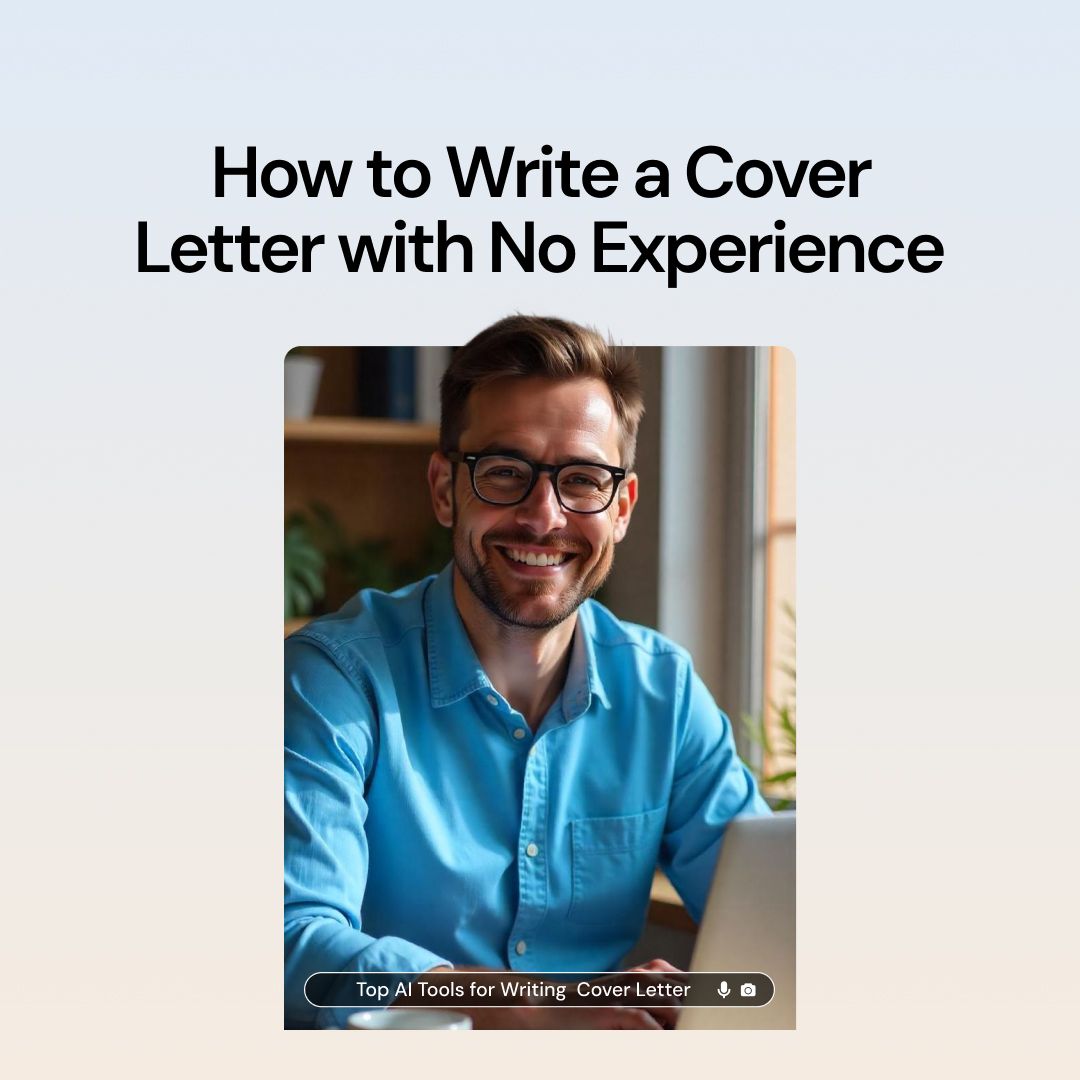
How to Write a Cover Letter with No Experience Using AI Chat

Muhammad Bin Habib
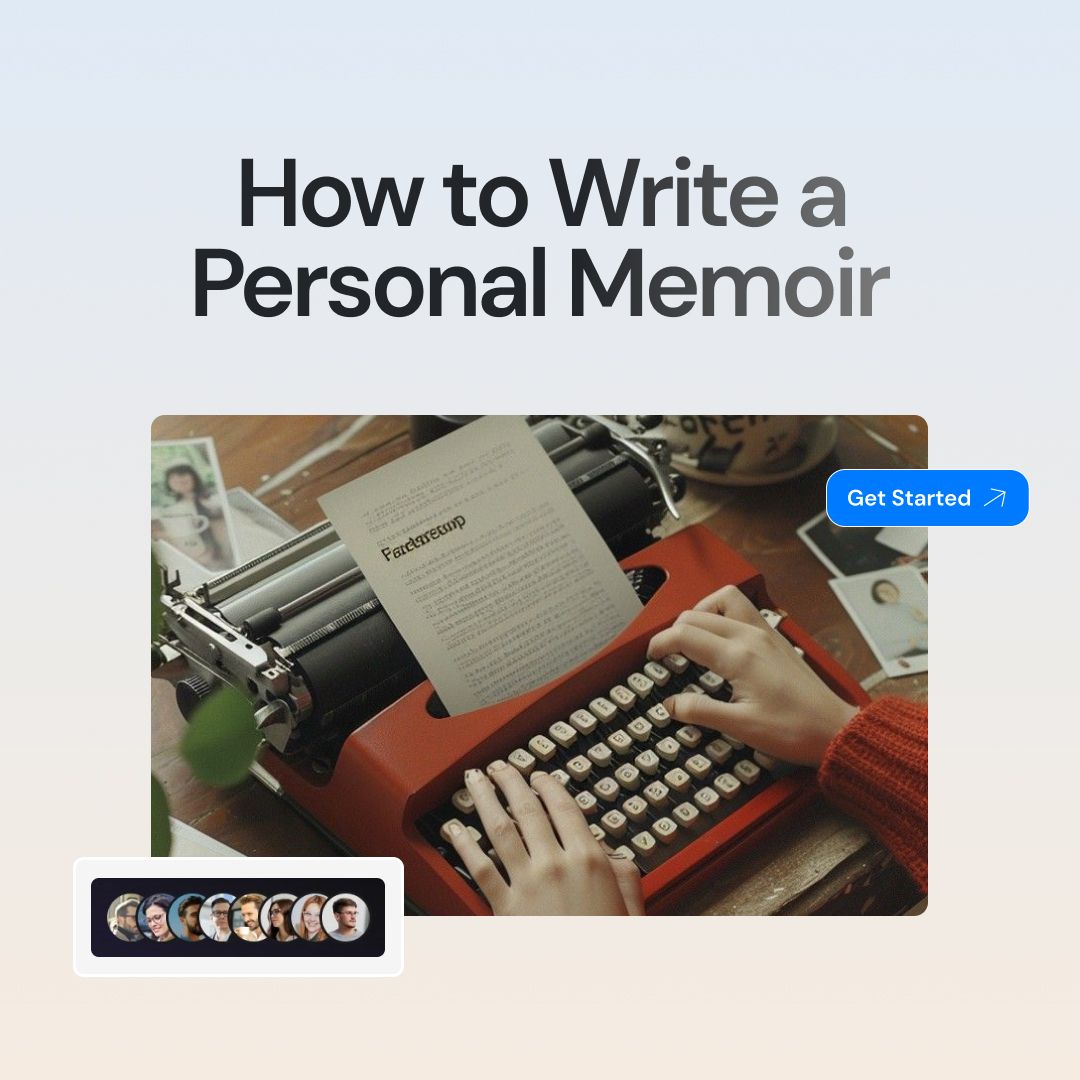
How to Write a Great Memoir: How to Start & Finish Your First Draft

Muhammad Bin Habib
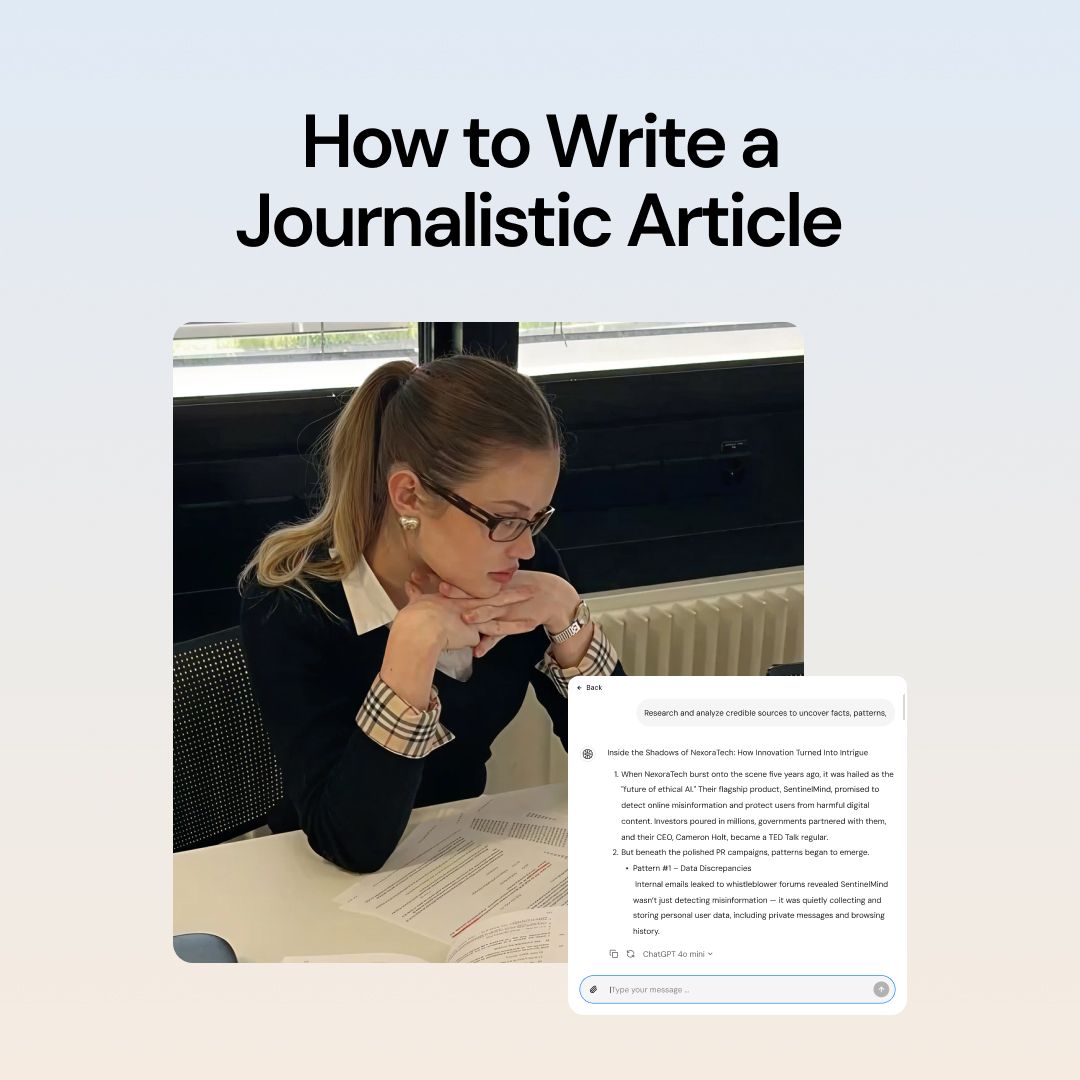
How to Write a Journalistic Article: Definition, Types, Structure and More

Muhammad Bin Habib
